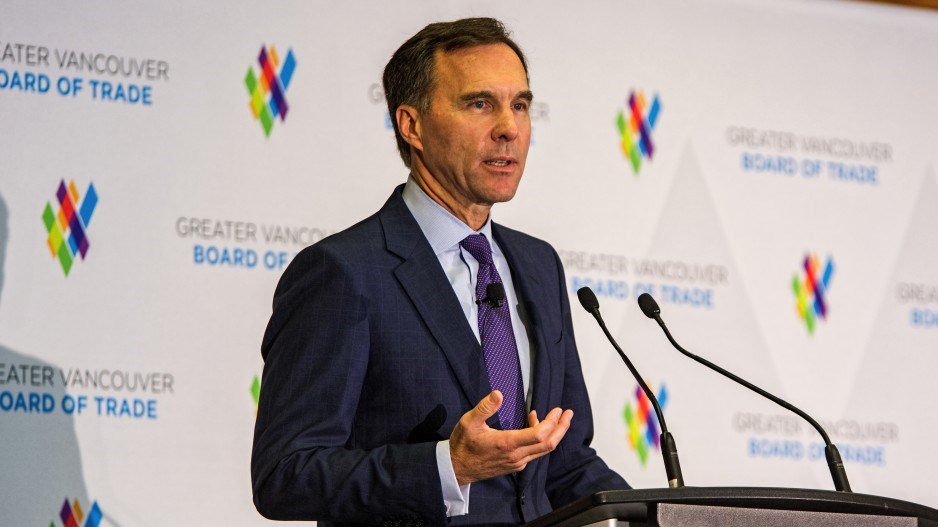What happened: B.C.’s tech sector is raising concerns about some provisions within Ottawa’s recently revised 75% wage-subsidy program
Why it matters: Many West Coast tech companies may fall through the cracks of the program based on current eligibility requirements
When Finance Minister Bill Morneau last week shared more details about Ottawa’s retooled 75% wage subsidy, it was clear some wrinkles needed to be ironed out — or perhaps, flattened, in today’s pandemic nomenclature.
The subsidy is currently available to businesses, non-profits and charitable organizations that have demonstrated a 30% decline in revenue compared with the same month a year earlier.
And for new businesses that can’t demonstrate such annual losses: “We’re working on how to deal with that,” Morneau offered on April 1.
SendtoNews Video Inc. CEO Matthew Watson said the federal government is on the “right track” with the subsidy but tech companies are at risk of falling through the cracks.
“The 30% revenue decrease is going to have some perhaps unforeseen exclusions for companies and employees that need it most,” said Watson, whose Victoria-based company is best known for its video distribution platform for sports highlights showcased within online stories as well as other entertainment, news and weather videos.
“Our technology sector is full of companies that are growing at over 50% a year and staffing up accordingly. In fact, many necessarily staffed up already for 2021.”
He said if companies have to compare revenue to the previous year rather than the previous month, it will likely leave them ineligible for assistance.
Morneau did state monthly comparisons might be one option for new companies, but he did not specifically make reference to high-growth tech firms.
Watson said many tech companies that haven’t experienced 30% revenue declines will still have to lay off large numbers of staff.
The goal of the Canada Emergency Wage Subsidy program is to help companies keep more workers on the payroll.
It would also alleviate pressure on EI and the Canada Emergency Response Benefit, the latter of which offers $2,000 monthly payments for up to 14 weeks for those who might not qualify for EI.
The B.C. Tech Association, meanwhile, acknowledged there are a “few gaps in the current approach.”
But in a statement to Business in Vancouver, BC Tech CEO Jill Tipping said the government is aware of those gaps and her organization is hopeful future announcements will address those concerns.
The association said many tech and life sciences companies may already have solid business plans but if they are at a pre-revenue stage, they would not be able to demonstrate a 30% decline in revenue.
That would leave those companies vulnerable to laying off workers instead of keeping them on the payroll to keep work going.
B.C. Tech is recommending changing the wage subsidy criteria so that it applies to a company that can demonstrate 30% revenue declines or else apply to a “qualifying” small company.
As for fast-growth companies, the association is recommending the government allows month-to-month comparisons rather than annual comparisons in revenue.
Many Software-as-a-Service (SaaS) companies that sell on an annual subscription basis spread revenue to comply with accounting rules.
“Which in normal circumstances gives a true picture, but not in the environment we’re in today,” BC Tech said in a statement.
“We recommend [using] cash basis revenues to assess whether SaaS companies have seen a 30% year on year decline.”
The $71-billion wage-subsidy program was originally introduced at 10% with only small businesses eligible.
It was boosted to 75% in late March with a wider variety of organizations now eligible.
The subsidy will be backdated to March 15, while the program will run 12 weeks until June 6.
The finance minister said the government hasn’t determined yet if the program will be extended beyond 12 weeks.
The subsidy will cover up to 75% on the first $58,700 an employee earns — a maximum of $44,025, or $847 a week — regardless of the size of the company for which he or she works.




